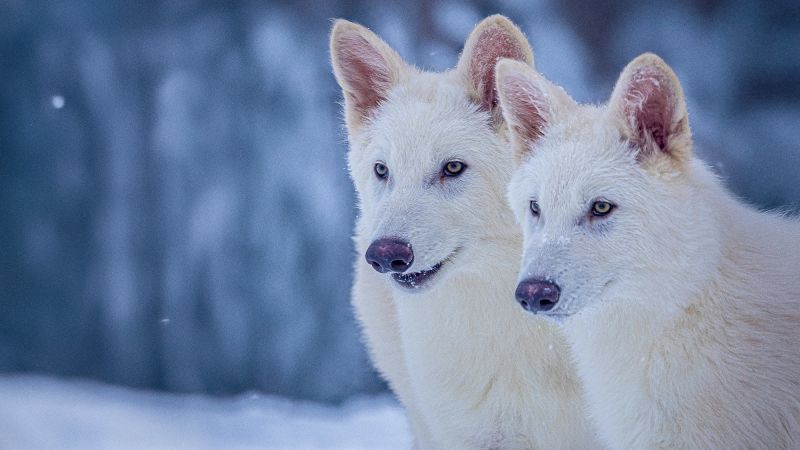Dire Wolf Resurrection: Scientists' Breakthrough? A Closer Look at the Possibilities and Challenges
The iconic dire wolf, Canis dirus, a formidable predator that roamed North America alongside mammoths and saber-toothed cats during the Pleistocene epoch, has captured the imagination for generations. While extinct for thousands of years, recent advancements in genetic engineering have sparked a renewed interest—and perhaps even hope—for its resurrection. But is a dire wolf resurrection truly within reach? Let's delve into the scientific breakthroughs, the challenges ahead, and the ethical considerations involved.
The Promise of De-extinction: Genetic Engineering Takes Center Stage
The possibility of bringing back extinct species, often termed "de-extinction," hinges on several key advancements in genetic technology. The most promising approach for resurrecting the dire wolf involves several steps:
-
Ancient DNA Extraction: Scientists need to recover well-preserved dire wolf DNA from fossils, a challenging task given the degradation of DNA over millennia. Recent advancements in techniques like ancient DNA sequencing have shown encouraging results.
-
Genome Sequencing and Editing: Once extracted, the ancient DNA needs to be sequenced to create a complete genome. This genome will then be compared to the genome of its closest living relative, the gray wolf (Canis lupus), identifying the key genetic differences. Gene editing technologies, such as CRISPR-Cas9, could then be used to introduce these differences into the gray wolf genome.
-
Surrogate Pregnancy: The genetically modified embryo would then need to be implanted into a surrogate mother, likely a gray wolf. This presents significant challenges, as successful interspecies pregnancies are rare and often result in complications.
Challenges and Hurdles in the Dire Wolf Resurrection Project
While the scientific community is optimistic about advancements in gene editing and ancient DNA extraction, numerous hurdles still exist:
-
DNA Degradation: The age of the fossils and the inherent degradation of DNA over time pose a significant obstacle. The DNA may be fragmented and contaminated, making it difficult to obtain a complete and accurate genome.
-
Genome Gaps: Even with advanced sequencing techniques, there may be gaps in the recovered dire wolf genome. Scientists may need to make educated guesses or use information from related species to fill these gaps, potentially introducing inaccuracies.
-
Ethical Considerations: The ethical implications of de-extinction are profound. Should we bring back extinct species? Where will they live? What impact will they have on existing ecosystems? These are crucial questions that require careful consideration.
Beyond the Dire Wolf: The Broader Implications of De-extinction Research
The research surrounding the dire wolf's potential resurrection is not just about the dire wolf itself. It contributes to a broader understanding of evolutionary biology, genetics, and conservation efforts. The techniques developed for de-extinction could also be applied to:
-
Conservation of Endangered Species: Gene editing techniques could help bolster the genetic diversity of endangered species, increasing their resilience to diseases and environmental changes.
-
Understanding Evolutionary Processes: By comparing ancient and modern genomes, scientists gain valuable insights into evolutionary processes, adaptation, and extinction events.
Conclusion: A Long Road Ahead
While the prospect of a dire wolf resurrection is exciting, it’s crucial to acknowledge the substantial challenges that remain. The scientific community is making significant strides, but a successful resurrection will require significant advancements in technology, careful ethical considerations, and a thorough understanding of the ecological implications. The journey is long, but the potential benefits for science and conservation are considerable. Stay tuned for further updates as this fascinating field of research continues to unfold.

